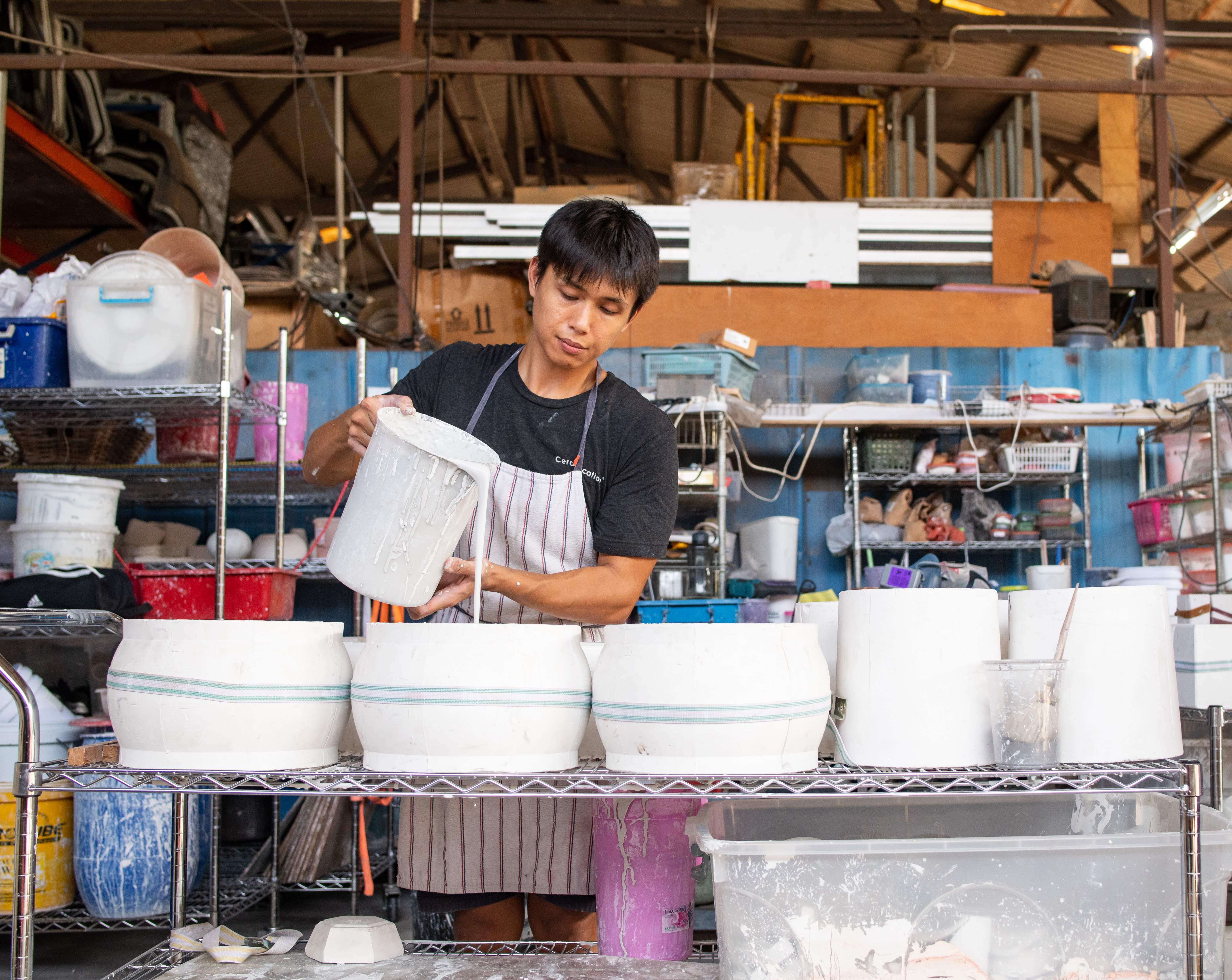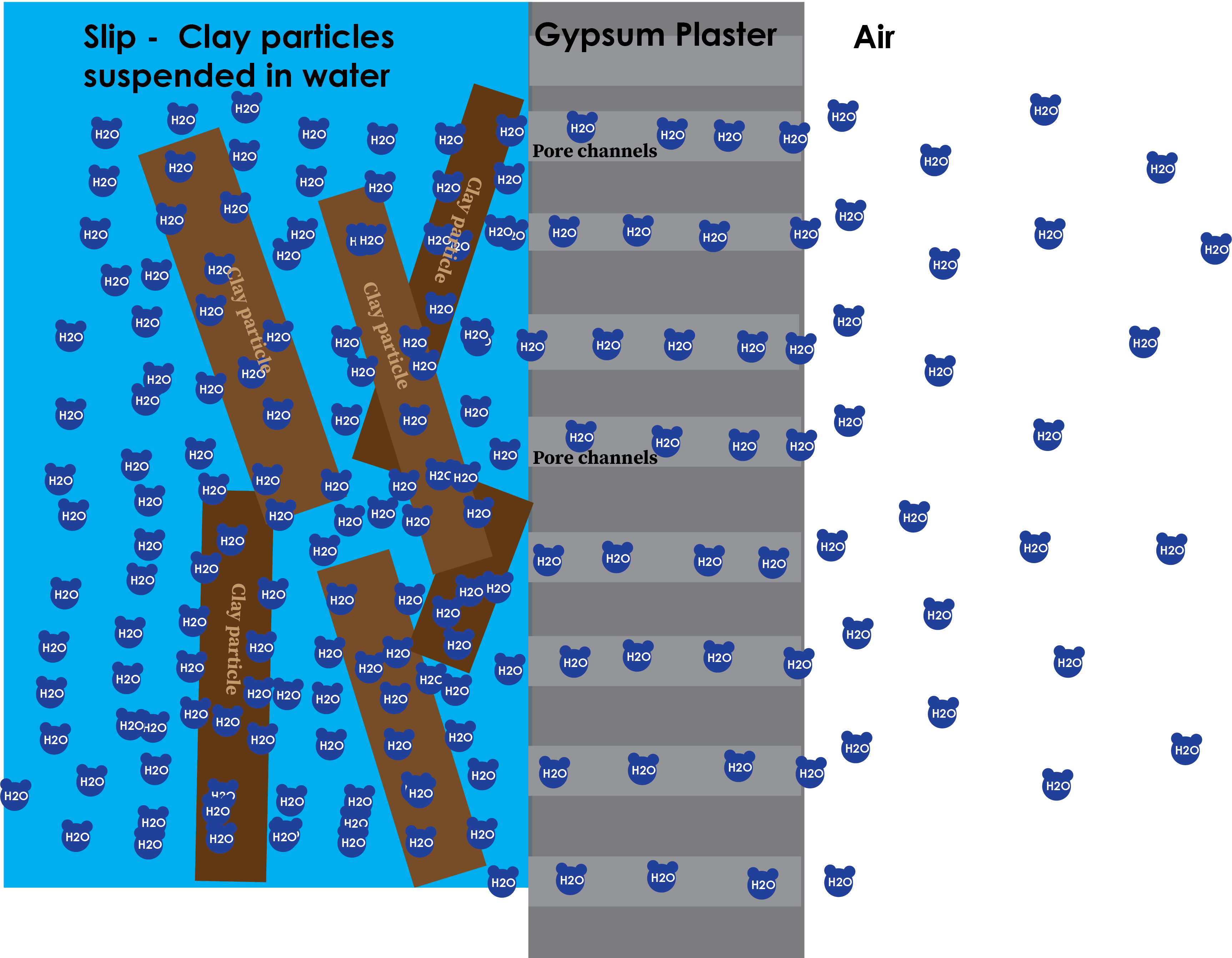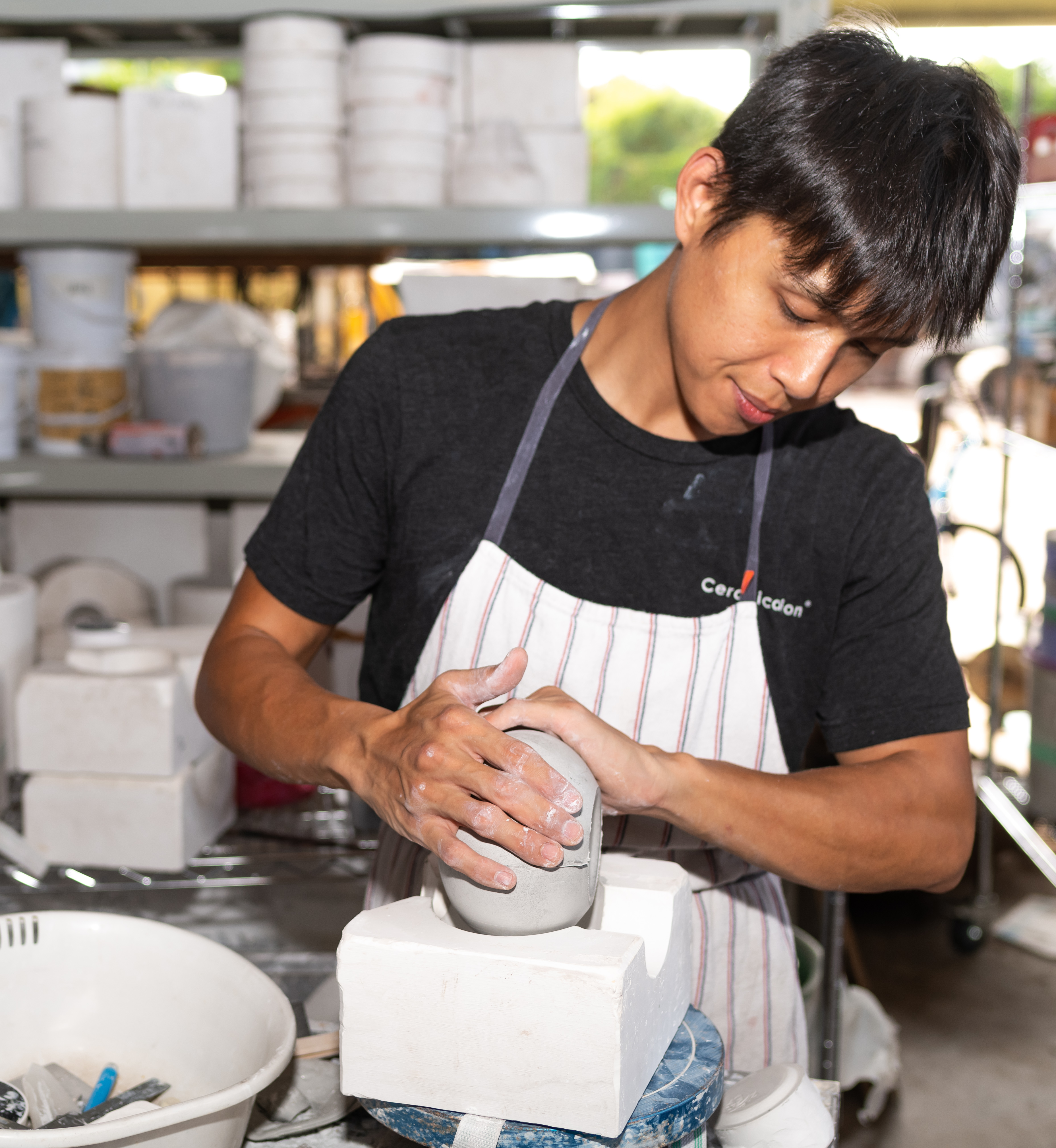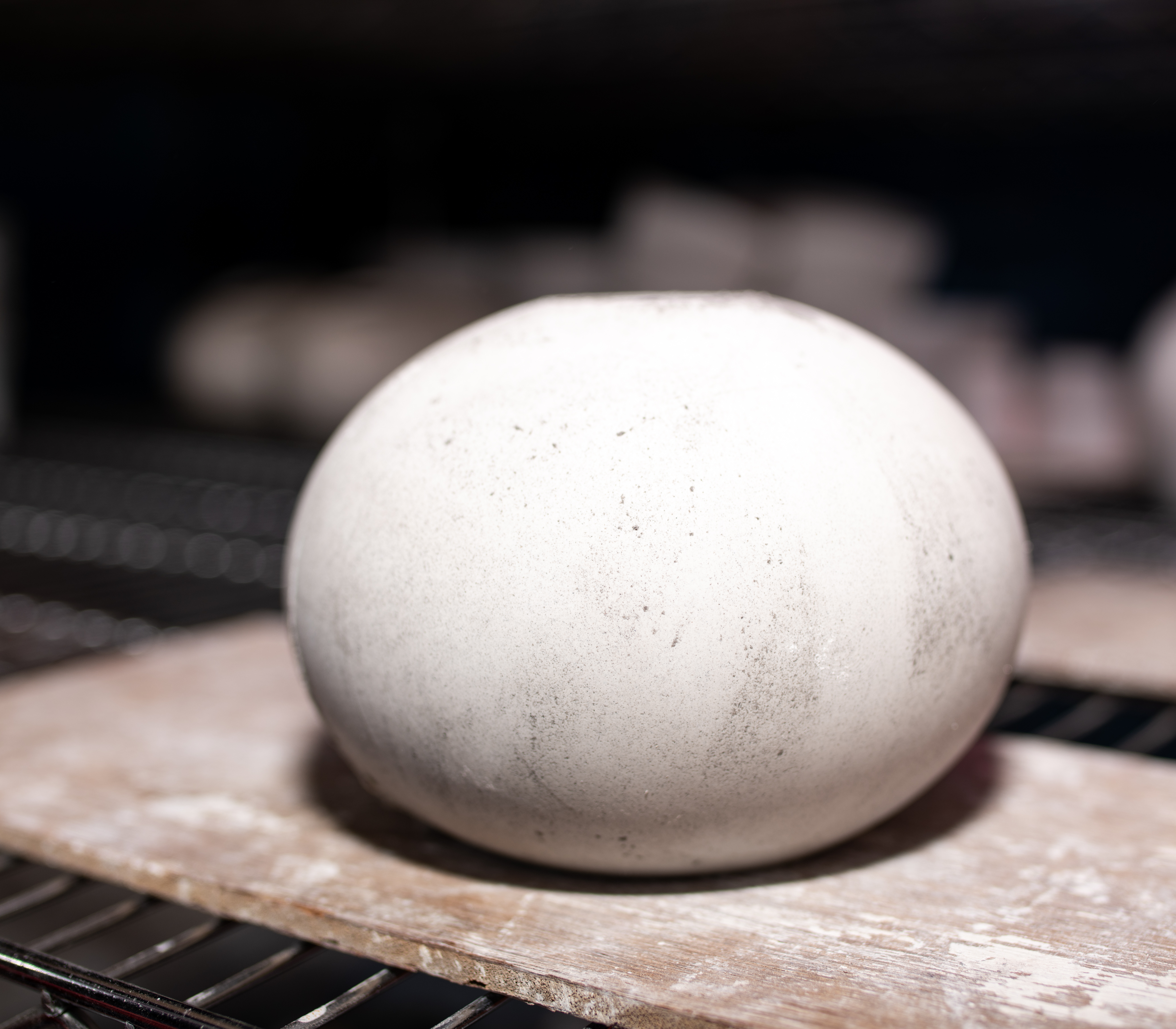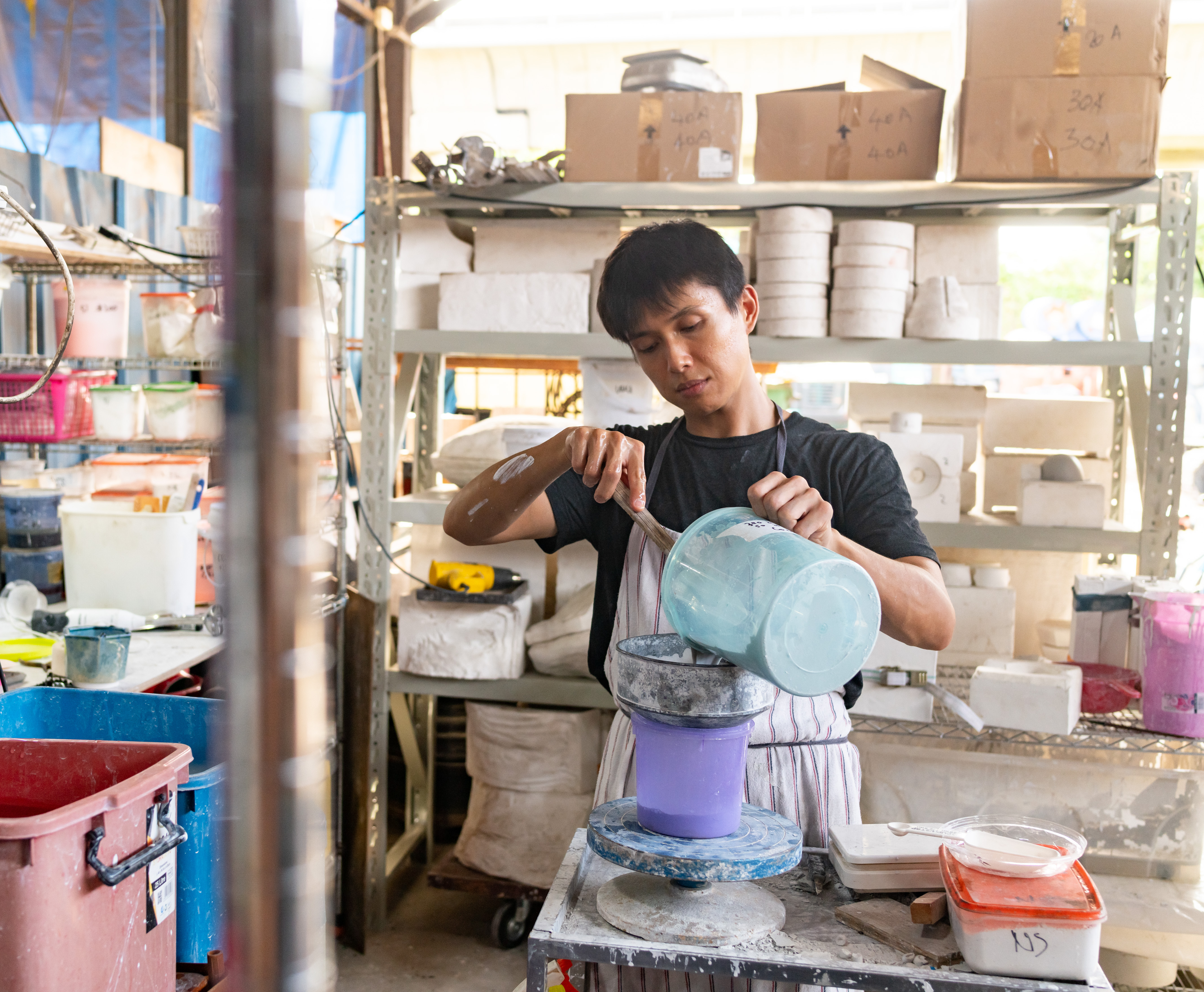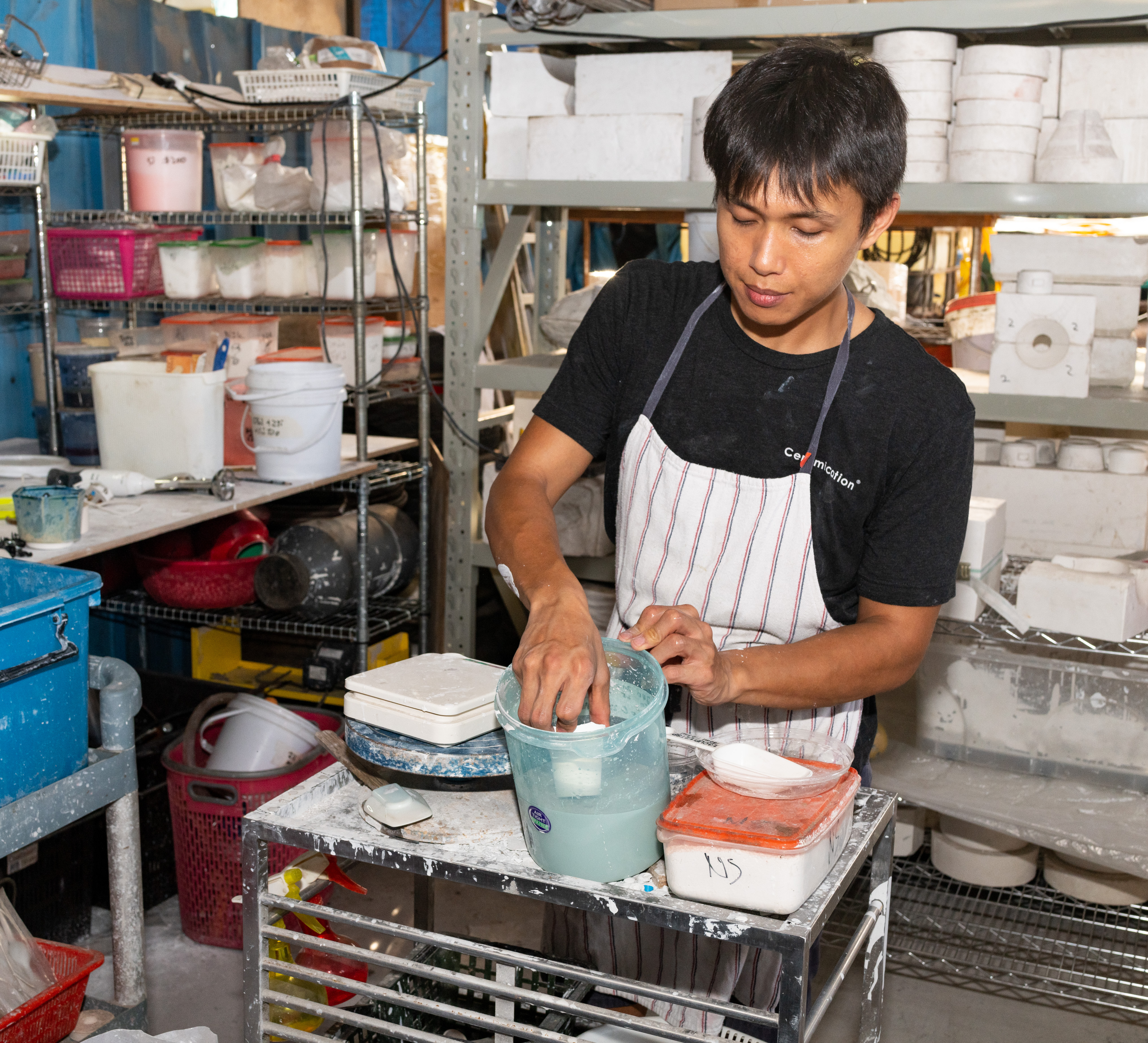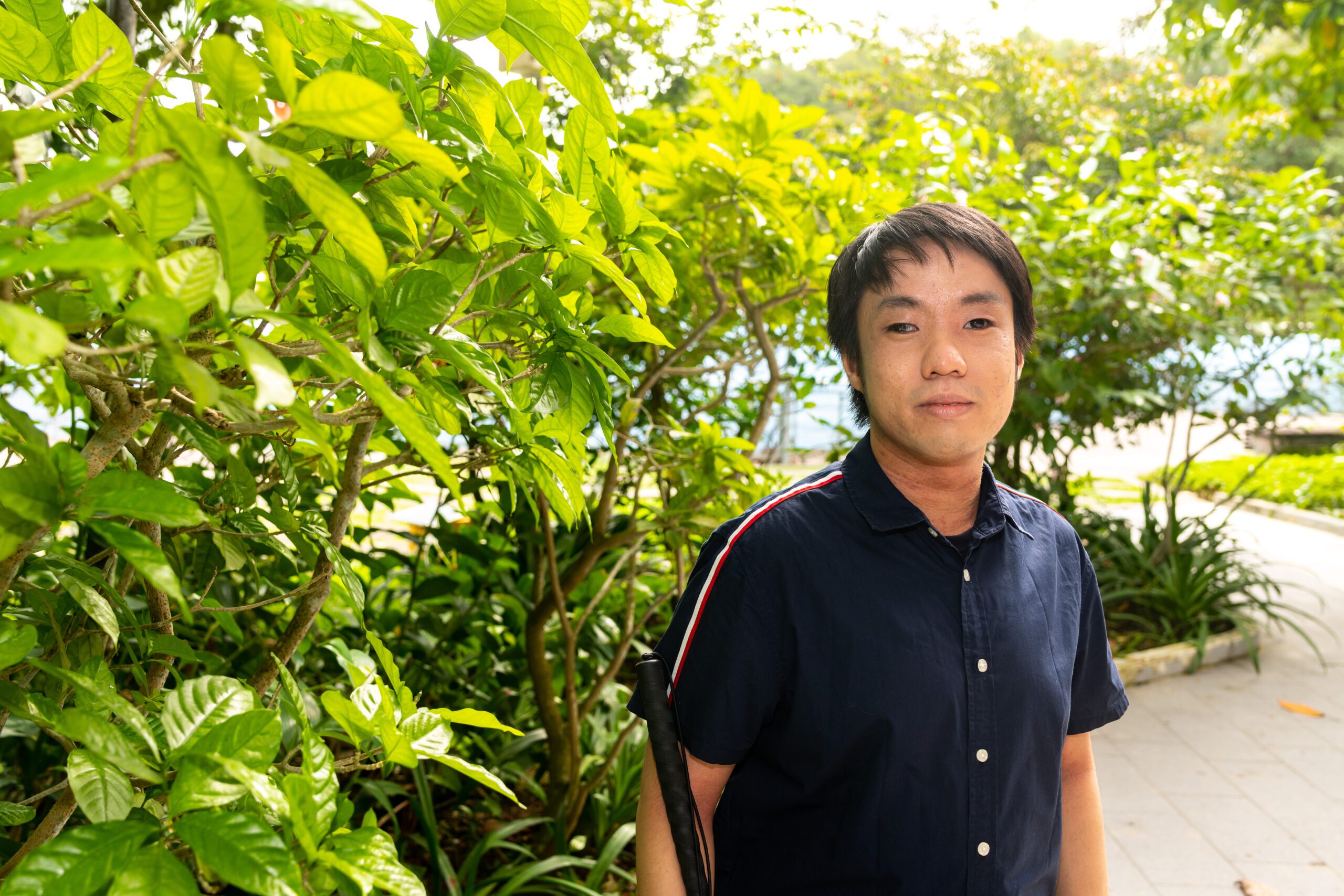Why did you choose to specialise in macro-crystalline glaze?
The very moment that I saw a pot with a macro-crystalline glaze finish at the studio where I first learnt wheel-throwing, my interest was piqued. Deeply in love, I fell into the rabbit hole and have since dedicated an untold amount of time to exploring and experimenting with macro-crystalline glazes. The technique of creating macro crystals in glazes is analogous to the natural creation of willemite crystals in the earth’s magma. Thanks to modern technology, this formation process, which took millions of years, is whittled down to a day in the studio.
This glaze also represents philosophically the beauty of differing perspectives. In factory-produced pottery, crystallisation — or devitrification — affects the gloss of the product and is also unsuitable for tableware. In the glass industry, devitrification is unacceptable. But I love it. And other potters and a lot of customers love it. We try all means to transform what the conventional industry sees as a defect into beauty.
Glaze formulation is undoubtedly the most exciting part of pottery making, as glazes come in any colour and texture. To understand glazes, one must see the minerals at the elemental level. Glazing over clay body can be for decorative and/or to make functional ware watertight and not stain during use. Glazes are a potter’s main intellectual property. Unique ones are discovered through extensive testing and sometimes sheer luck. I spend time developing glazes as they not only have to turn out beautiful, but they also have to cling to my clay body properly without failing. The current palette library I use took me about four years of painstaking effort to develop.
